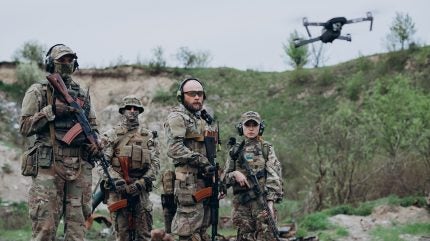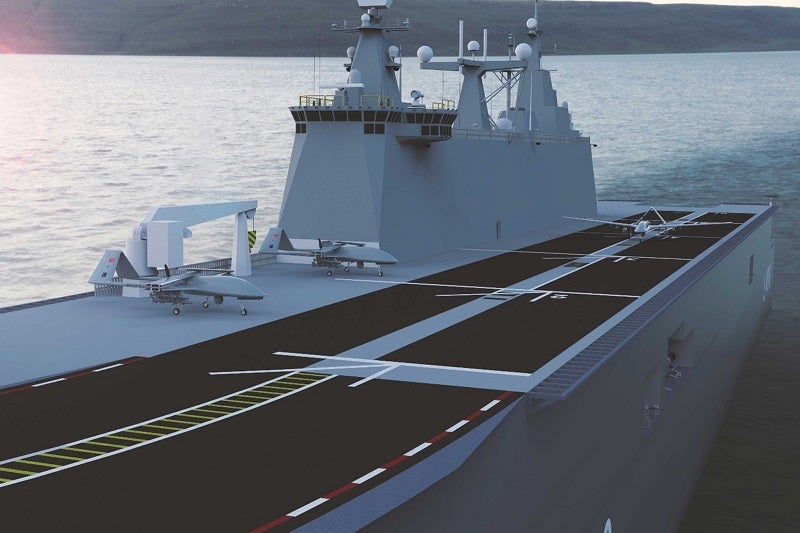
Recent intelligence from GlobalData indicates that the global military uncrewed aerial systems (UAS) market is projected to grow at a 4.8% compound annual growth rate in the next ten years, from $12.5bn in 2024 to $20bn in 2034.
Although the Asia-Pacific region dominate the market at 44.6% in the forecast period, Europe has made considerable progress in gaining the second spot, reaching a 30.2% market share, as the continent has mobilised on a war footing in response to the full-scale Russian invasion of Ukraine just over two years ago. North America trails slightly behind accruing just under half of that percentage figure.
Europe’s meteoric rise is largely determined by Ukraine as one would expect, but also on the periphery of the continent, in Türkiye, where the indigenous supplier Baykar continues to shake the global UAS market with its novel concepts.
Ukraine’s crude UAS
The market has been upended in the last two years by the Russo-Ukrainian war, where we see their proliferated use by forces, often for asymmetric use.
Dispersed Ukrainian troops, evading targeting by Russian strikes, often rely on crude systems such as First-Person View (FPV) drones that are easily developed – often homemade – and readily deployable.
Average Ukrainian FPV production costs anywhere from $331-$443 depending on quality, and troops have even started making their own flight controller circuit boards, cutting out risky foreign sources such as China.
In recent months, such loitering munitions were used to devastating effect in frontline combat, often compensating for Ukraine’s near-constant shortfall in conventional artillery ammunition.
Türkiye’s Bayraktar UAS
The indegneous Turkish UAS manufacturer Baykar has captured global sentiment with its line of Bayaktar systems.
On 26th March 2024, the supplier announced it had successfully run the first test flight for its forthcoming Bayraktar TB3 system while utilising the ASELFLIR-500 system, an electro-optical reconnaissance, surveillance and targeting system.
Bayraktar TB3 is a medium-altitude long-endurance UAS capable of speeds of 300km/hr and features six hardpoints for carrying various air-to-surface missiles. It was specifically designed to be compatible with short-range landing and take-off capacities and foldable wings for compatibility with aircraft carriers
Its maden flight featured the first use of optical systems on drones all designed and built in Türkiye, representing the enormous growth and self-sufficiency of the Turkish defence market.
The Turkish President Recep Ergoğan’s son-in-law, Selcuk Bayraktar, the chairman of the board and CTO of the company, has inspired a new wave of techno-nationalism that has propelled the businessman as one of the foremost political players in the country on a platform that his technology will prop up the Anatolian republic on the world stage.

In a GlobalData Analyst Briefing on the TB3 test flight, Wilson Jones, noted where the Turkish Government plans to deploy the innovative systems in its force structure.
“The TB3 programme was unveiled in 2020, and Türkiye’s TCG Anadolu (Juan Carlos I class) carrier was converted to carry only drones.
“The Turkish defence industry has been able to quickly respond to major policy challenges and fulfil the operational capacities of the Turkish government’s military expansion.
“At the same time, the US government remains open to readmitting Türkiye to the F-35 programme. Should this happen, the TB3 would be able to co-ordinate with jet fighters and carrier groups to identify and eliminate target.”
This prospect comes at a time when many advanced militaries are trying to team together crewed fighter jets with autonomous systems, known as Collaborative Combat Aircraft.



